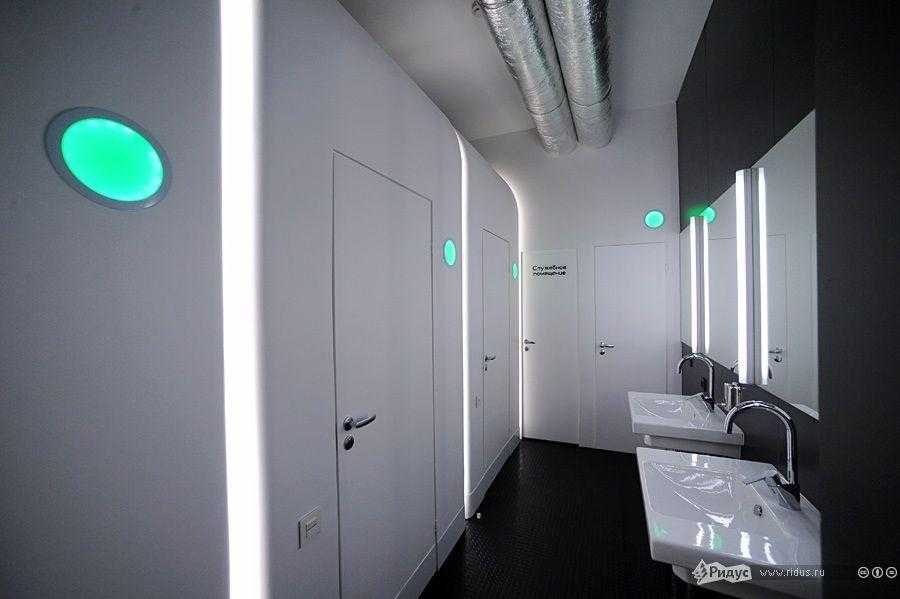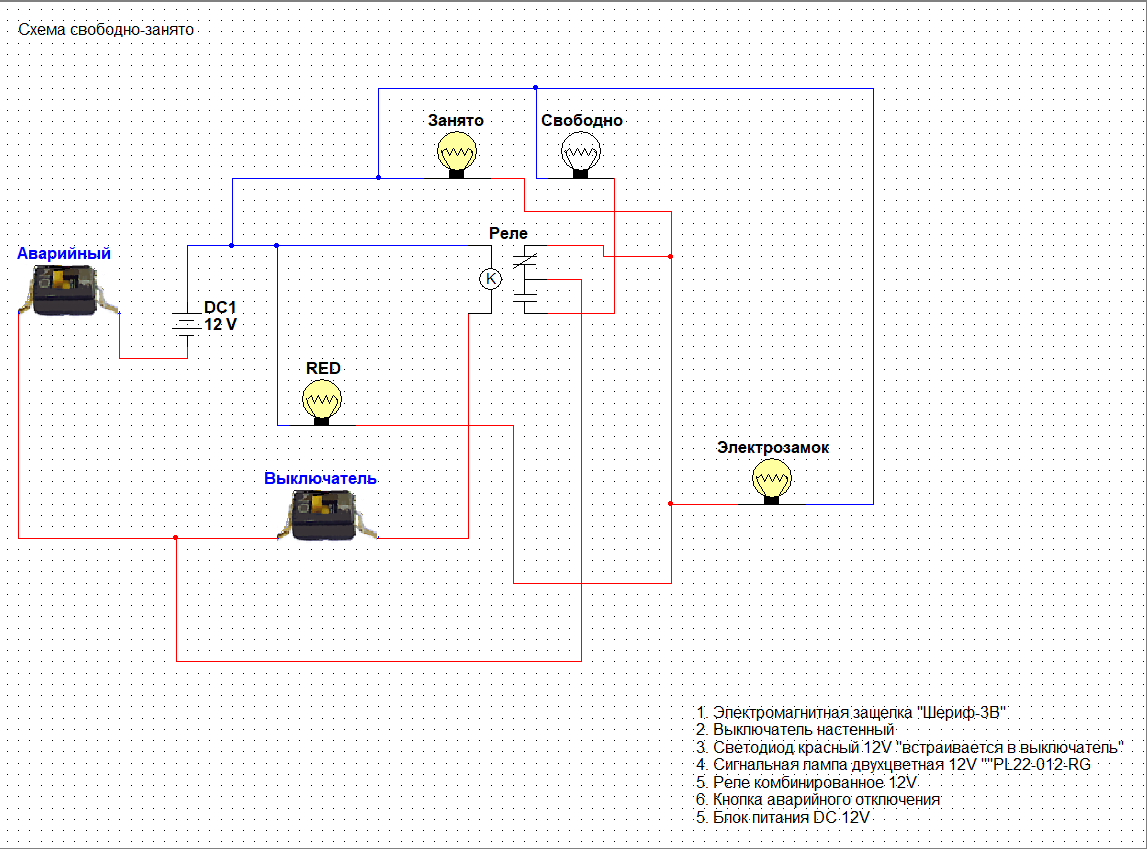Answer the question
In order to leave comments, you need to log in
How to develop an indicator?
I work in a construction and installation company, we are doing repairs to a public space, the customer wanted the bathrooms to have an LED indication of occupancy.
Question: where to start developing such an indicator, who to contact, how much it might cost?
Ps added a photo of what the customer wants. There are no sensible people in electrics, and we cannot develop them ourselves. Where can you apply?
Pss should work from the presence sensor.
Answer the question
In order to leave comments, you need to log in
in one BC I saw something similar, inside the groove where the lock tongue goes, there was a built-in button, when the lock was closed, the tongue pressed the button and the red lamp above the door turned on
Where to start development? - The Internet is full of different implementation options, choose the right one and there will already be where to start, or just assemble it.
It makes no sense to turn to someone to earn money, if this is a one-time installation, it is easier to immediately buy a finished device.
If you want to do everything yourself - again - there is no problem to assemble it yourself or buy and upgrade the same presence sensor.
For example here - iToilet. The office toilet is free at all confused very interesting)
Look for "electronic lock". There are so many different things that I can only advise a general direction.
if we discard the moronic words "development of an indicator", then a presence sensor will help, which will turn on instead of a light bulb a LED night light connected on wires and built into the wall.
if it doesn’t work like that, then you can order a DEVELOPMENT to the developer and develop on this yourself half a rollback. ride if the customer is an idiot.
One person thought to do this and described why he did not succeed. It turns out that there are a lot of incidental circumstances: either the device can be deceived (say, by sitting motionless for a long time, or not locking the door), or the turnover will be reduced (if the timeout after exit is excessively increased), etc.
Sorry, the link is not available. In general, everything is not so simple.
You can try a volume sensor set to the absence of a person, and consider any change as presence. But even here, deception is possible if the visitor, leaving, rearranges the roller of paper or bucket.
1. A pyroelectric sensor, but not as a chain of quartz (as they are usually placed), but as a pyrometer. But don't focus on him. Lights up green only if the user has already cooled down.
2. Camera :). The simplest software for detecting a visitor (a picture is not an empty room). You can also have a bunch of photodiodes with a plisin or another neurocomputer. But it needs to be set up. You can even insert a photo (on film) and make a relay on the Fourier image. But then the electricians are unlikely to fix it (and generally understand what it is).
3. Echolocation sensors (acoustic). Laser presence sensors - blocked - it means someone is inside.
4. Capacitive sensor.
1. Sensors - installation in several places.
2. A microcontroller or a PC for processing and to say that someone had a lens sealed, someone had a membrane squeezed out, someone died himself from a jump of 220.
3. Relays to turn on the light bulbs.
I consider the following scheme to be the simplest solution: the reed switch, to which the lock tongue approaches when closing inside the latrine, closes the indicator circuit on the battery and the flashing LED!
Hello, you can do it like this, I attached the diagram and signed the elements used. In real life, I did it at work. on the door jamb there is a two-color signal built-in LED lamp, but you can put two, one red, the second green. When the toilet is open, the green light on the jamb is lit, when the user enters the toilet and presses the switch button, the "latching button" on the switch itself and on the outside of the jamb lights up red. As soon as the button is pressed to its original position, everything goes into open and free mode. A light bulb instead of a lock is for clarity. Lock model, small electromagnetic latch "Sheriff 3V" "Normally open" has an emergency power off button, placed somewhere outside in a hidden place. Relay any combined 12V

Didn't find what you were looking for?
Ask your questionAsk a Question
731 491 924 answers to any question